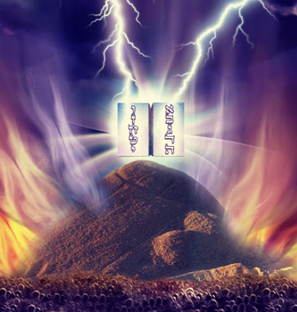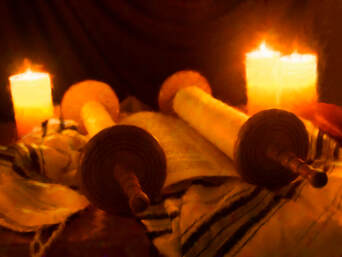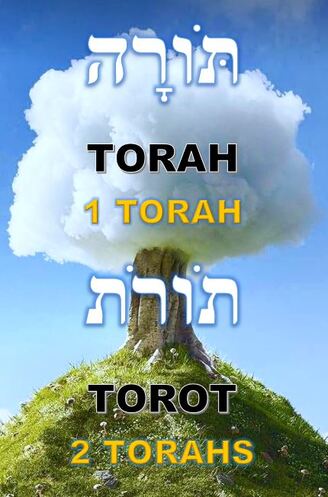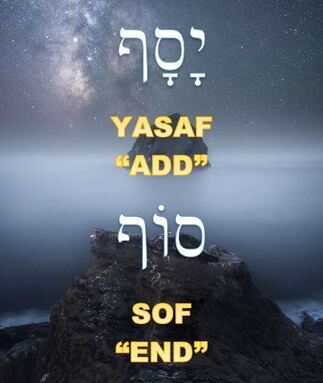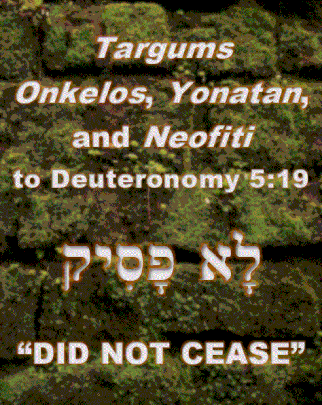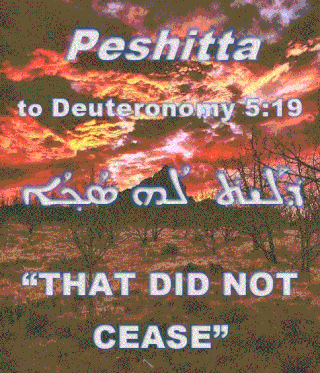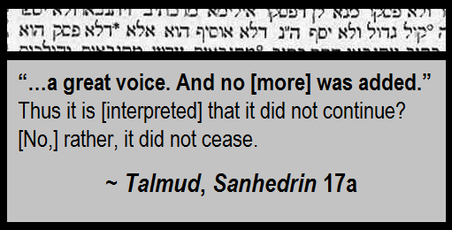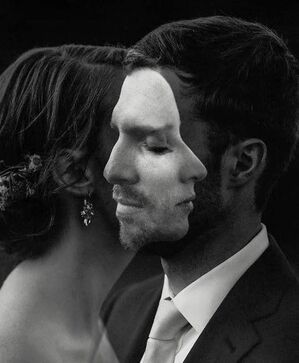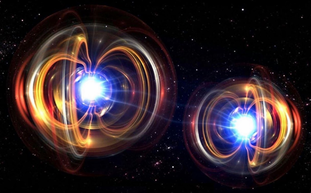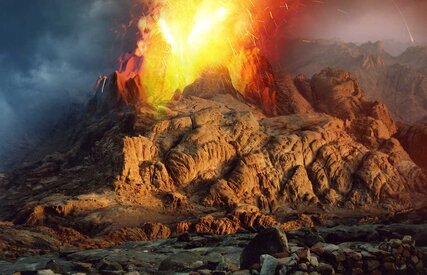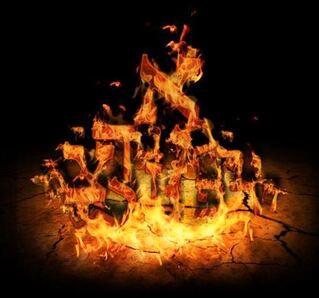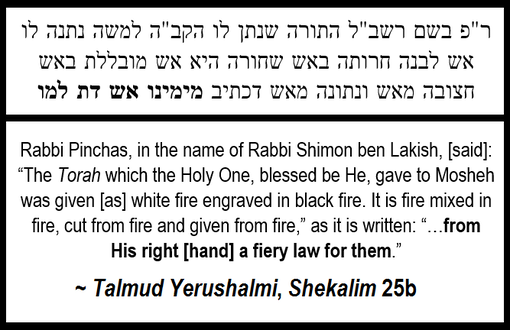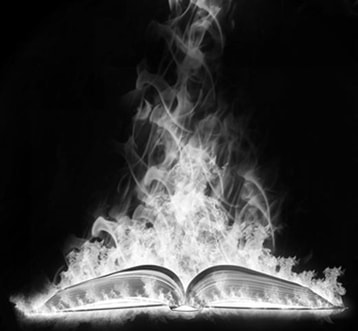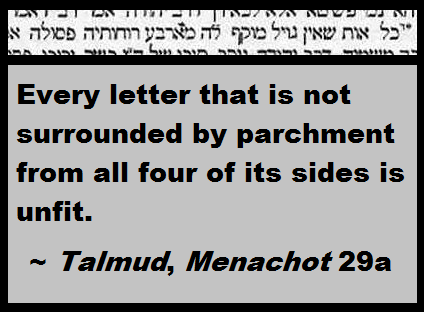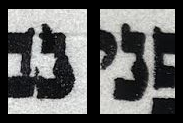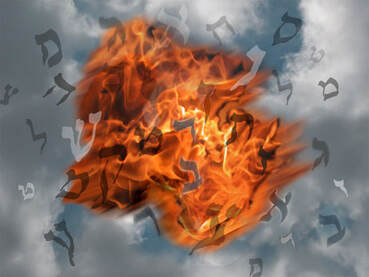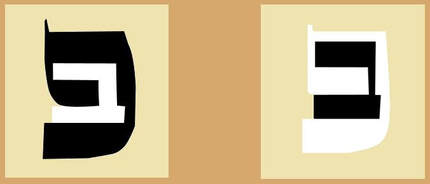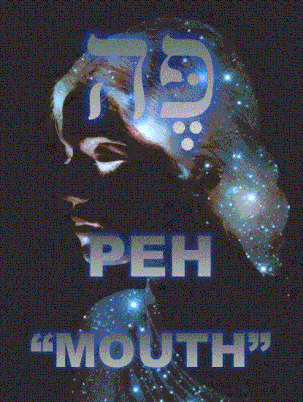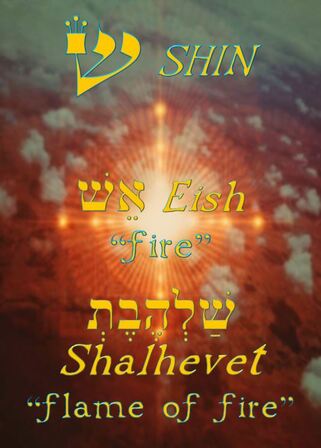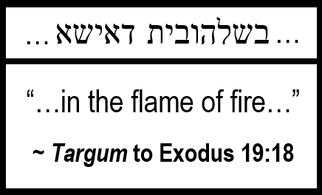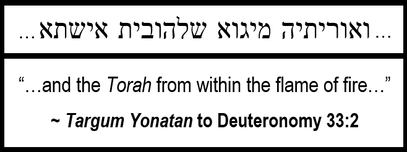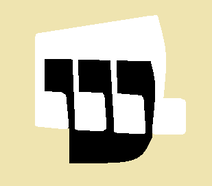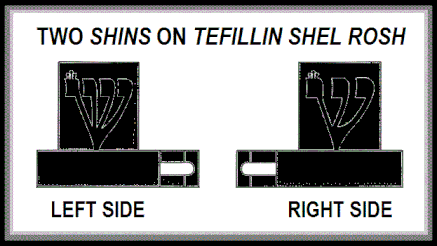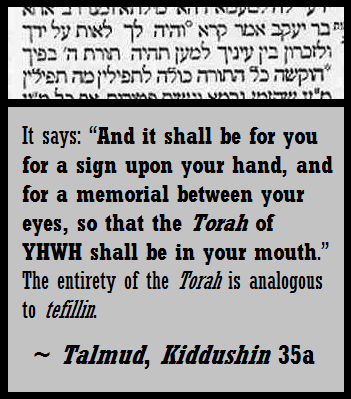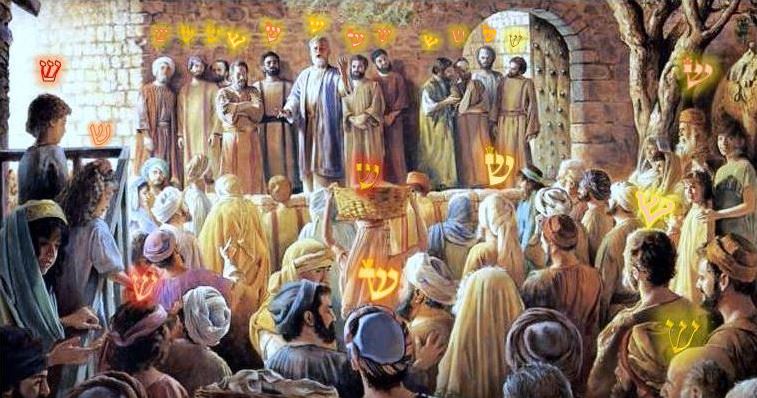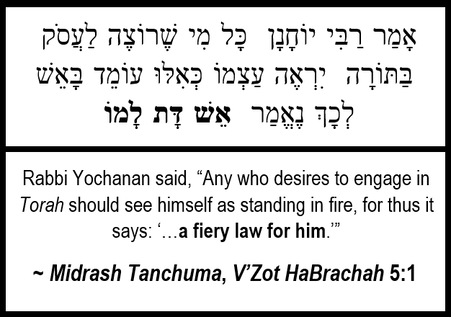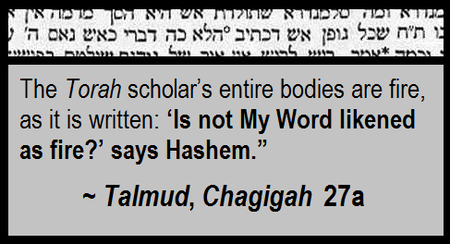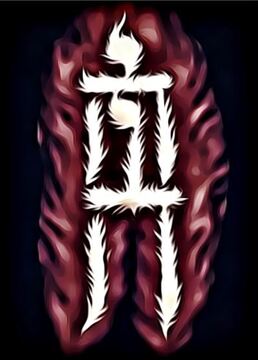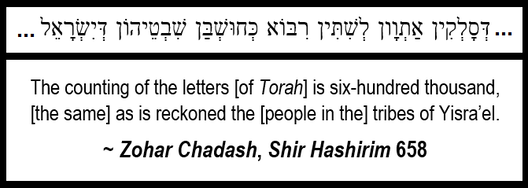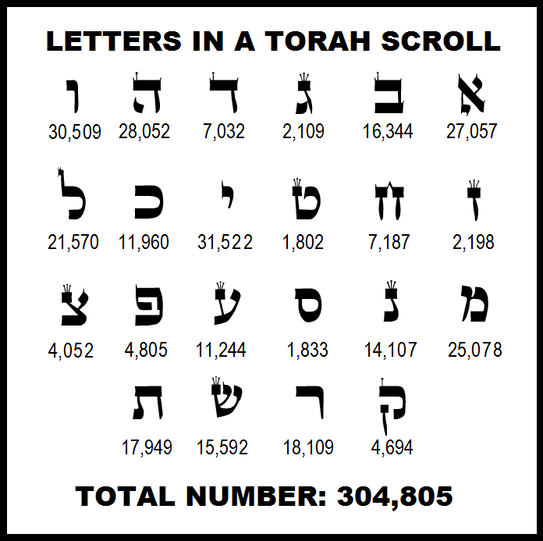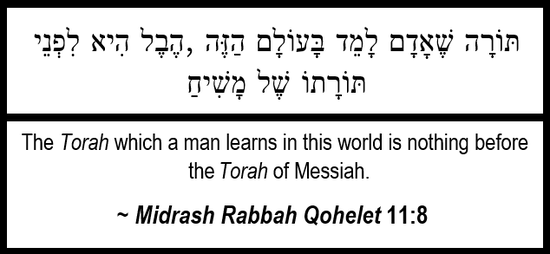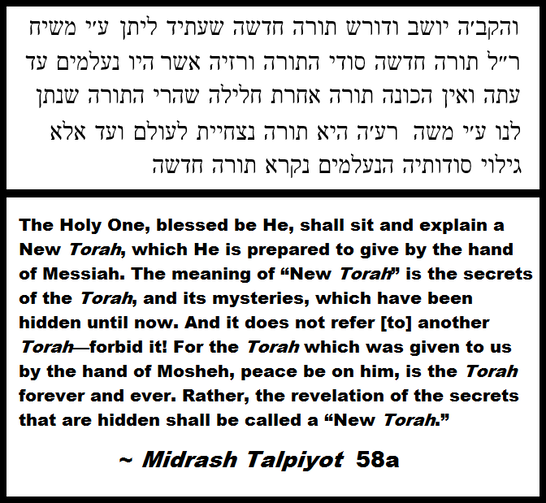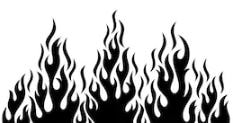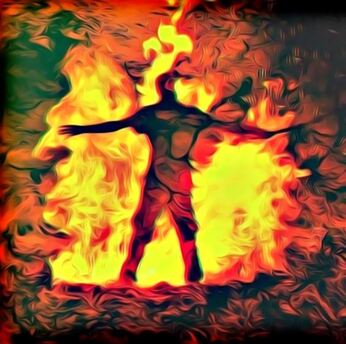TORAHS OF BLACK
AND WHITE FIRE
by Jeremy Chance Springfield
8/3/2020
The Torah is the purest expression of Divine will for Israel.
Given graciously by the Holy One from the steep slopes of Mount Sinai, it is the heavenly blueprint for an earthly life in covenant with Him, a life framed within the positive boundaries of His Kingdom rule.
Given graciously by the Holy One from the steep slopes of Mount Sinai, it is the heavenly blueprint for an earthly life in covenant with Him, a life framed within the positive boundaries of His Kingdom rule.
For every Israelite, and for all who join themselves in allegiance to the Hebrew people in service to the Holy One, the Torah is the unchanging black and white truth of heaven handed into the care of the sons of men.
Deuteronomy 33:4 speaks of this in plain terms.
Deuteronomy 33:4 speaks of this in plain terms.

Mosheh commanded Torah for us, an inheritance of the congregation of Ya’akov.
The Words of the Most High define the borders of living for all who would worship before Him. Whether native born or in-grafted to Israel, the same Torah stands as an authority of Divine inspiration for all. It is the grand inheritance of all worshipers of the Creator, for it conveys the will and establishes the promises so eagerly given to all who honor Him as King.
This single expression is discussed in several passages in Scripture.

One Torah shall be for the native and for the sojourner who sojourns among you.
~ Exodus 12:49
~ Exodus 12:49

One Ruling shall be for you, [it is] to be as for the sojourner as [it is] for a native, for I am YHWH your Deity.
~ Leviticus 24:22
~ Leviticus 24:22

One Torah and one Ruling shall be for you and for the sojourner who sojourns with you.
~ Numbers 15:16
~ Numbers 15:16
It all seems very clear and concise: the people of the Holy One, whether Hebrew-born or whether Gentile who have attached themselves to the Creator, all are expected to live in some manner by an obvious set of Kingdom laws. These many laws are revealed in the text of the Torah.
Interestingly, however, there are also a few passages of Scripture which speak to us about the existence of two Torahs!
If this assertion sounds odd, rest assured the validity of such a claim is found explicitly in the Hebrew text, as clear as the above statements about the single Torah that has been given to us. If it seems strange, it is because translators have rendered the Hebrew text into various translations that unfortunately obscure the reality of the two Torahs.
The following passages are the relevant places where the two Torahs are mentioned.
Interestingly, however, there are also a few passages of Scripture which speak to us about the existence of two Torahs!
If this assertion sounds odd, rest assured the validity of such a claim is found explicitly in the Hebrew text, as clear as the above statements about the single Torah that has been given to us. If it seems strange, it is because translators have rendered the Hebrew text into various translations that unfortunately obscure the reality of the two Torahs.
The following passages are the relevant places where the two Torahs are mentioned.

And clarify to them the statutes and the two Torahs, and make known to them the way in which they shall walk, and the actions which they shall perform.
~ Exodus 18:20
~ Exodus 18:20
This passage contains the Hebrew word TOROT where I have translated it as “two Torahs.” The word TOROT is merely the plural form of Torah. Therefore, the most direct and concise literal translation would be “two Torahs.” Some translators might opt for the more obscure rendering of “Torahs” or the notion of “laws,” but doing so needlessly suggests a myriad of TOROT, when the most basic, minimum of acceptable translation would instead yield a plural of two, and that more conservative rendering is preferable as it does not assume more Torahs were intended when the text does not imply such a notion.

These are the statutes, and the rulings, and the two Torahs which YHWH gave between Himself and between the sons of Yisra’el on Mount Sinai, by the hand of Mosheh.
~ Leviticus 26:46
~ Leviticus 26:46
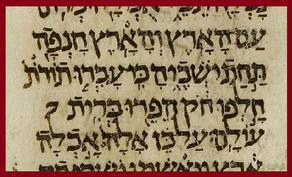
And the earth is polluted under its inhabitants, for they have transgressed [the] two Torahs, changed the statute, broken the eternal covenant.
~ Isaiah 24:5

And upon Mount Sinai You descended, and spoke with them from the heavens, and gave them just rulings, and two Torahs of truth, and statutes, and good commandments. ~ Nehemiah 9:13
Note the verse that immediately follows and its unique wording in contrast to what was said immediately prior:

And You made known to them Your holy Sabbath, and commandments, and statutes, and a Torah, [which] You commanded them by the hand of Mosheh Your servant.
~ Nehemiah 9:14
~ Nehemiah 9:14
In two consecutive verses, the Hebrew distinguishes between Torot and Torah.
Based on these details, we must arrive at a conclusion that makes sense.
Is there a single Torah, or are there two Torahs?
The text speaks of a single Torah as well as two Torahs being given from Mount Sinai.
How is this reconciled?
The Torah is explicit in its information. There is no inherent mystery over the revelation of its content. It would appear to be the singular expression of the will of the Holy One. In fact, in Deuteronomy 5:19 (22 in the English versions), we are told what appears to be a contradictory statement to the thought that there could have been more divine information relayed with the giving of the Torah.
Based on these details, we must arrive at a conclusion that makes sense.
Is there a single Torah, or are there two Torahs?
The text speaks of a single Torah as well as two Torahs being given from Mount Sinai.
How is this reconciled?
The Torah is explicit in its information. There is no inherent mystery over the revelation of its content. It would appear to be the singular expression of the will of the Holy One. In fact, in Deuteronomy 5:19 (22 in the English versions), we are told what appears to be a contradictory statement to the thought that there could have been more divine information relayed with the giving of the Torah.

These are the Words YHWH spoke to all your assembly at the Mountain, from the midst of the fire, the cloud, and the thick darkness [with] a great voice. And no [more] was added.
The text seems to be straightforward: nothing more was added than what was spoken to the people. How, then, could there be two Torahs when only one is openly revealed, and the text asserts nothing more was given? The answer may surprise you, as it does not conflict with the assertion made in the text but sustains it and magnifies the implication stated here in an amazing manner.
The above phrase of “and no [more] was added” is traditionally arrived at by interpreting the Hebrew text as if the word YASAF “Add” is the intended word behind the term in the text. However, it is also possible to translate this word in a very different manner. YASAF could also be a conjugation of the word SOF, meaning “End.” If understood in this fashion, the phrase would change to “and did not / does not end.” This suggests that the information of the Torah has not ceased—that it was indeed given once, but more is still being conveyed.
The above phrase of “and no [more] was added” is traditionally arrived at by interpreting the Hebrew text as if the word YASAF “Add” is the intended word behind the term in the text. However, it is also possible to translate this word in a very different manner. YASAF could also be a conjugation of the word SOF, meaning “End.” If understood in this fashion, the phrase would change to “and did not / does not end.” This suggests that the information of the Torah has not ceased—that it was indeed given once, but more is still being conveyed.
If this sounds odd to consider, it must be made clear that this particular understanding of the phrase appears to be the ancient understanding of what the Hebrew text was attempting to assert, as the Aramaic Targums of Onkelos, Yonatan, and Neofiti all rendered the phrase as “did not cease.”
Similarly, the Aramaic text of the Peshitta to this passage shows us the same understanding was present with that translation, as it also read: “did not cease.”
Somewhat later, the rabbis of the Talmud Bavli, in Sanhedrin 17a, addressed the meaning of the passage and came to the same conclusion.
It is important to note this factor in the Hebrew text of Scripture, for it shows us we can legitimately understand the assertion as being that the Torah was given definitively in the content that anyone can read, and at the same time, it was given in such a way that it has not ceased to be fully conveyed to us. Since the term could legitimately be understood in both perspectives, then we must not limit the meaning to the singular but apply to it also the plural notion that the Words continued on, giving further information not disclosed in the clear text of the revealed Torah. Doing so is the only way to address the unique status of the Hebrew term in that passage. The Holy One gave the Torah and added no more, and that is what we endeavor to perform to this day, but at the same time, He also gave the Torah and did not stop giving such divine information!
Such a situation gives us a platform for understanding how there can be two Torahs when only one is revealed. The fact is a single Torah cannot allow for two Torahs, but two Torahs can consist of a single Torah. In other words, 1 cannot equal 2, but 2 can equal 1—if understood under specific contexts.
This is particularly seen in a Biblical and spiritual sense in the union of a man and a woman to become one flesh. One plus one equals two, and yet those two are said to be one. Distinction remains, yet union is possible.
Such a situation gives us a platform for understanding how there can be two Torahs when only one is revealed. The fact is a single Torah cannot allow for two Torahs, but two Torahs can consist of a single Torah. In other words, 1 cannot equal 2, but 2 can equal 1—if understood under specific contexts.
This is particularly seen in a Biblical and spiritual sense in the union of a man and a woman to become one flesh. One plus one equals two, and yet those two are said to be one. Distinction remains, yet union is possible.
Scientifically, this can be seen in quantum entanglement, where two particles are brought together, entangled in their states, and then separated. Whatever is subsequently done to one particle finds reciprocation in the other. They are two distinct particles, yet they act as if they were one.
Such examples as these show us that spiritually and scientifically (that is, empirically), the two Torahs can legitimately make up one Torah.
To begin to understand what this means and why it is a significant detail for a believer, we have to first look at the details of how the Torah was given, which is stated clearly in Exodus 19:18.
To begin to understand what this means and why it is a significant detail for a believer, we have to first look at the details of how the Torah was given, which is stated clearly in Exodus 19:18.

And Mount Sinai was entirely [in] smoke because YHWH descended upon it in fire…
This expression tells us that the Creator made His Presence known in the physical through an astounding display of the supernatural. Without any explanation or source of fuel, He made fire to burn on the barren and rocky summit of Mount Sinai. This defies explanation in the physical, and so we must admit that the nature of the fire was heavenly—a supernatural presentation of His power and authority.
From the midst of this fiery setting, the great act of grace was enacted for His people: the Torah was thus given! Deuteronomy 4:36 explains.

From the heavens He made you hear His voice to correct you, and upon the earth He showed you His great fire, and His words you heard from the midst of the fire.
(This detail is repeated in: Deuteronomy 4:12, 9:10; Jeremiah 5:14)
The people are reminded of this unique and supernatural presentation right before they enter into the land of Israel in Deuteronomy 33:2.
The people are reminded of this unique and supernatural presentation right before they enter into the land of Israel in Deuteronomy 33:2.

And he said, “YHWH came from Sinai, and dawned from Se’ir for them. He shone from Mount Paran and came with myriads of holy ones; from His right [hand] a fiery law for them.”
The reality of the fiery giving of the Torah is referred to later by the prophet who knew well the burning nature of the Word when he was told a further detail about it in Jeremiah 23:29.
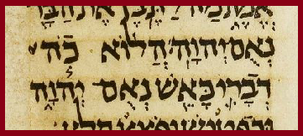
“Is not My Word likened as fire?” says YHWH…
These details show us a truth repeated throughout the Torah and into the rest of Hebrew Scriptures: the Torah was given from a source of divine fire and is even referred to in Scripture as fire. Given in flame, the Torah is said to even be fire, itself!
This is vital to understand in effort to appreciate the reality and the nature of the two Torahs. This information gave rise to a perspective that came to dominate the ancient viewpoint of the nature of the Torah as given from Mount Sinai. Rabbi Shimon ben Lakish made a statement about this fiery nature of the Torah that was reiterated by many other teachers in Judaism through the centuries. He is first recorded stating it in the Talmud Yerushalmi, Shekalim 25b.
This statement can be seen repeated in such other ancient texts as Talmud Yerushalmi, Sotah 37a, Devarim Rabbah 3:12, Shir Hashirim Rabbah 5:11, Mekhilta d’Rabbi Yishma’el 19:18, and several others.
The intent of Rabbi Shimon ben Lakish’s statement merits further consideration: the Torah was given as white fire and engraved in black fire. What does this mean? The notion is that there are two Torahs that were given: one background Torah that was given in white fire, and one foreground Torah that was given in black fire!
The intent of Rabbi Shimon ben Lakish’s statement merits further consideration: the Torah was given as white fire and engraved in black fire. What does this mean? The notion is that there are two Torahs that were given: one background Torah that was given in white fire, and one foreground Torah that was given in black fire!
The white / black reference is analogous to the parchment / ink upon which all subsequent Torahs are written in scroll form. The black of the ink is the obvious and revealed Torah, while the surrounding white of the parchment is the second and unrevealed Torah. The content of the ink makes up the Divine information that is known to anyone who reads it. The content of the parchment makes up the Divine information that is not known just by reading, but takes spiritual discernment to realize and appreciate.
These are the two Torahs.
Returning to the Talmud, in tractate Menachot 29a, we see that this notion of the significance of the Torah of “white fire”—the space surrounding the letters—is viewed to be of utmost importance.
These are the two Torahs.
Returning to the Talmud, in tractate Menachot 29a, we see that this notion of the significance of the Torah of “white fire”—the space surrounding the letters—is viewed to be of utmost importance.
The statement here is simple and direct: for a letter in a Torah scroll to be considered written correctly, and thus a valid part of the Word, it must be entirely legible by being surrounded with parchment on every single side. Any letters that touch are immediately disqualified from being written correctly. The accompanying image shows an example of the Hebrew letter Nun from a scroll of Esther that is touching the letter Bet to its left, and a correct form of a Nun in the same scroll surrounded completely by parchment.
To most who read the Word, the empty spaces between letters are of value only to distinguish one letter from another and one word from the next. However, we can view the above statement in a deeper manner.
According to the ancient spiritual perspective, the written text is so holy that the unwritten parts which surround it must, of necessity, also take on a vital spiritual role. This role was understood to therefore be the Torah of white fire. The written letters could not exist without the presence of the unwritten. Scripture tells us that the Torah was given in fire and is itself fire, as the Scriptural passages cited above made clear. Therefore, if the Torah was given from the midst of fire and is itself fire, then the fire from which it was given necessitates to also literally be Torah, and thus the end result is that there are legitimately two Torahs!
Understanding these details leads us to the next relevant question. What is the significance of the Torah of white fire? What information does it consist of? How is one to fulfill the Torah that is made up of the negative space surrounding the positive space of the written letters?
The answer to this is one of seemingly infinite depth, as shall become clear as the study progresses. However, we can catch glimpses of the meaning if we pay careful attention to the Word.
For example, to begin to explain what the Torah of white fire has preserved for us, let us look first at the very beginning of the Torah itself. Genesis 1:1 in the Hebrew holds a detail that points us in the right direction to begin to appreciate what we are dealing with in the two Torahs. More specifically, let us look at the Hebrew word that begins the Torah: Bereshit “In-beginning.” But let us not stop there, but look deeper, at the very first letter of that word: Bet “B” in the pronunciation. And yet, we have not gone deep enough even with singling out that one initiating letter. Rather, let us look past the letter itself, to the realm that lay beyond what is read to what is not read: let us look to the white fire that surrounds the black fire.
According to the ancient spiritual perspective, the written text is so holy that the unwritten parts which surround it must, of necessity, also take on a vital spiritual role. This role was understood to therefore be the Torah of white fire. The written letters could not exist without the presence of the unwritten. Scripture tells us that the Torah was given in fire and is itself fire, as the Scriptural passages cited above made clear. Therefore, if the Torah was given from the midst of fire and is itself fire, then the fire from which it was given necessitates to also literally be Torah, and thus the end result is that there are legitimately two Torahs!
Understanding these details leads us to the next relevant question. What is the significance of the Torah of white fire? What information does it consist of? How is one to fulfill the Torah that is made up of the negative space surrounding the positive space of the written letters?
The answer to this is one of seemingly infinite depth, as shall become clear as the study progresses. However, we can catch glimpses of the meaning if we pay careful attention to the Word.
For example, to begin to explain what the Torah of white fire has preserved for us, let us look first at the very beginning of the Torah itself. Genesis 1:1 in the Hebrew holds a detail that points us in the right direction to begin to appreciate what we are dealing with in the two Torahs. More specifically, let us look at the Hebrew word that begins the Torah: Bereshit “In-beginning.” But let us not stop there, but look deeper, at the very first letter of that word: Bet “B” in the pronunciation. And yet, we have not gone deep enough even with singling out that one initiating letter. Rather, let us look past the letter itself, to the realm that lay beyond what is read to what is not read: let us look to the white fire that surrounds the black fire.
It is here that we can begin to see a glimpse of what we can appreciate in understanding the unity and revelation of the two Torahs.
The positive structure of the letter Bet is constructed in such a way that it consists of the negative space of the letter Peh “P” pronunciation. Therefore, whenever one writes the letter Peh in a Torah scroll, they have written also the letter Bet in negative space. This means that beyond the black fire of the initial Bet of Bereshit “In-beginning” of the Torah, we can see with spiritual eyes in the white fire of the Torah the letter Peh. The accompanying images attempt to highlight this reality, with the black area showing the letter written, with the corresponding negative space essentially creating the opposite letter.
The positive structure of the letter Bet is constructed in such a way that it consists of the negative space of the letter Peh “P” pronunciation. Therefore, whenever one writes the letter Peh in a Torah scroll, they have written also the letter Bet in negative space. This means that beyond the black fire of the initial Bet of Bereshit “In-beginning” of the Torah, we can see with spiritual eyes in the white fire of the Torah the letter Peh. The accompanying images attempt to highlight this reality, with the black area showing the letter written, with the corresponding negative space essentially creating the opposite letter.
What is the importance of this insight?
The letter Peh in Hebrew is literally also the word for “Mouth.”
The letter Peh in Hebrew is literally also the word for “Mouth.”
Thus, what comes forth from the unseen, unrevealed “mouth” of the Holy One that is preserved in the white fire? The answer is the black fire of the revealed Torah.
In the accompanying image from a Torah scroll, one can see the word B’PEE “in the mouth” in its Hebrew form as it is written later in Genesis, with the letter Bet next to the letter Peh, and can easily make out the form of a letter Bet in the negative space inside the Peh. I have also included an image from a scroll of Shir Hashirim (The Song of Songs) highlighting two instances of the letter Peh above an instance of the letter Bet in order to show the clear negative space of the letter Peh creating a Bet.
In the accompanying image from a Torah scroll, one can see the word B’PEE “in the mouth” in its Hebrew form as it is written later in Genesis, with the letter Bet next to the letter Peh, and can easily make out the form of a letter Bet in the negative space inside the Peh. I have also included an image from a scroll of Shir Hashirim (The Song of Songs) highlighting two instances of the letter Peh above an instance of the letter Bet in order to show the clear negative space of the letter Peh creating a Bet.
The Torah comes to us from the mouth of the Most High!
This brief introductory detail helps us to begin to appreciate the nature of the Torah of white fire: it is the higher form of the revealed Torah of black fire that we are called to perform as His people on this earth. The Torah of white fire surrounds and gives shape to the Torah of black fire, so that the two Torahs are one, and in need of each other to fully express the will of the Creator.
This dual factor of fire can be seen also in the letter Shin. Although the letter Shin literally means “tooth,” the letter itself has taken on from ancient times the notion of a “tongue of fire” due to its prominent usage in such terms as Eish “fire,” and Shalhevet “flame of fire,” along with its visual flame-like appearance.
This brief introductory detail helps us to begin to appreciate the nature of the Torah of white fire: it is the higher form of the revealed Torah of black fire that we are called to perform as His people on this earth. The Torah of white fire surrounds and gives shape to the Torah of black fire, so that the two Torahs are one, and in need of each other to fully express the will of the Creator.
This dual factor of fire can be seen also in the letter Shin. Although the letter Shin literally means “tooth,” the letter itself has taken on from ancient times the notion of a “tongue of fire” due to its prominent usage in such terms as Eish “fire,” and Shalhevet “flame of fire,” along with its visual flame-like appearance.
In fact, in the Targum of Exodus 19:18, we find the Aramaic cognate of Shalhevet used in the word Shalhuvit, to describe the descent of the Holy One onto Mount Sinai in fire, a passage previously addressed in this study.
Additionally, in the Targum Yonatan to Deuteronomy 33:2, we find the term Shalhuvit again used, but in direct description of the nature of the “fiery law” which the Hebrew text describes.
It is interesting that the Shin is connected to the Torah in that the word Eish “fire” is used in both passages in their Hebrew original text, and the word Shalhuvit “flame of fire” is used instead in their Aramaic translations. This connection of the Shin to fire and thus the Torah is seen especially in the fact that the negative space surrounding the “black fire” letter Shin creates yet another letter Shin, howbeit in this “white fire” form, it has four “heads” instead of the normal three.
The significance of this detail takes us to a very specific commandment: tefillin. Upon the leather head piece of the commandment to wear tefillin, which is called the tefillin shel rosh (see my study: Synoptic Tefillin), on the right side of the headpiece is found a normal letter Shin of three “heads,” while on the left side is found a Shin of four “heads.” Therefore, the tefillin shel rosh preserves for us a portrait of the two Torahs: the black fire and the white fire—the revealed and the unrevealed!
It is important to note that the performance of the commandment of tefillin is viewed in Judaism from ancient times as being equated with fulfilling the entire Torah. This is seen from a statement made in the Talmud Bavli, Kiddushin 35a.
TKnowing this, it therefore makes sense that from ancient times it has been customary to place two versions of the letter Shin upon the tefillin shel rosh—to symbolize the two Torahs in completion upon the wearer! This is further seen in that the letter Shin has the numeric value in Hebrew of 300, and there are two Shins on the head piece, for a sum of 600. Two Shins side-by-side spell the word SHESH, meaning "six." Adding the three “heads” of the normal Shin to the four “heads” of the unique Shin brings us to a total of 613—the traditional sum of the number of commandments found in the Torah!
It may thus come as no surprise now to know the Talmud derived that the wearer of tefillin is fulfilling the entire Torah based on the information contained in Exodus 13:9.
It may thus come as no surprise now to know the Talmud derived that the wearer of tefillin is fulfilling the entire Torah based on the information contained in Exodus 13:9.

And it shall be for you for a sign upon your hand, and for a memorial between your eyes, that the Torah of YHWH shall be in your mouth…
By wearing tefillin, the believer is said to have the entire Torah itself in their mouth! This therefore connects with the concealed Peh that surrounds the letter Bet of Bereshit and shows us to be revealers of the Torah when we fulfill the commandments. We become a vehicle to transmit the Word to the world, just like the Holy One did at Mount Sinai to the nation of Israel!
This is seen as the beautiful intention of the supernatural event recorded for us in the book of Acts 2:3.
This is seen as the beautiful intention of the supernatural event recorded for us in the book of Acts 2:3.
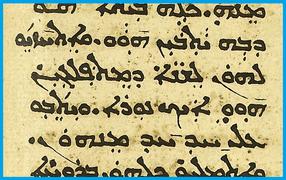
And tongues that were halved as fire appeared to them and sat over each one of them.
The believers were experiencing a supernatural tefillin event, with the Torah of fire coming upon them on the exact same festival of Shavuot / Pentecost on which the Torah was originally given to Israel in fire! The text even tells us that the fire was “halved” over them—that is to say, there were two fires over the people, just like the two Shins on the tefillin shel rosh that represent the black and the white fire of the two Torahs! Once these connections are made to the way the Torah was given and the nature of their being two Torahs, it makes complete sense with the details we see happening to believers in this incident!
A similar parallel to the significance of this event for a believer can be found in a passage from the Midrash Tanchuma.
The Talmud Bavli, Chagigah 27a, even went so far as to say something far greater about the believer engaged in Torah.
These two passages are attempting to convey that the believer is to be immersed in the Word—all of it! The believer is to let the light of the Torah—the two Torahs—engulf him and touch every part of his life. We can perform a commandment that is written in the text, and yet we must also be aware that there is a higher reality to that commandment. Even if we do not perceive the white fire that frames the black fire of the commandment, we should still be aware that there is more to our observance than even we might perceive.
In this perspective of viewing ourselves as standing in fire and becoming fire in relation to the concept of the Torah being fire, a unique notion arises: the believer essentially becomes a living letter of the Torah! Amazingly, this insight is one that was promoted in the ancient Jewish text of the Zohar Chadash to Shir Hashirim!
This passage from the Zohar Chadash is of further interest to the topic beyond the intriguing idea that a believer personifies a letter of the Torah when we consider the detail of how many letters it suggests are in the Torah: 600,000. While it may not be a subject widely studied by most believers, the total number of letters that are traditionally expected to be written in a Torah scroll for it to be accepted as a valid copy of the Word of the Holy One is almost half of the number asserted by the author of the Zohar Chadash! The accompanying image shows the actual amount of times each letter of the Hebrew alphabet appears in a kosher Torah scroll, along with the sum total of letters expected to be written.
The traditional total amount of letters in a scroll of Torah comes to a sum of 304,805. How could the author of the Zohar Chadash be off by almost an entire Torah’s worth of letters?
What is going on?
The answer is that since the amount of letters suggested by the Zohar Chadash is essentially twice as much as the Torah we are called to perform, it must be taking into account the information contained in the Torah that we do not readily perceive: it is factoring in the white fire that surrounds the 304,805 letters of the black fire that are obvious to all. When we consider the entirety, we can thus safely surmise that the assertion of a double amount of letters is in reference to the two Torahs mentioned in Scripture!
This study has endeavored to show that the depth of the Torah is far more profound than we can imagine. We perform the revealed with knowledge of its significance, and we hope and pray to perceive the concealed and so honor all facets of His Word, when such is possible. But the truth is that we see only in part during this time and in this world. So much is hidden from us.
It is the Messiah who shall bring us all to a complete understanding of the significance of the Torah. It is the Messiah who will reveal the concealed and show us with clarity the depths of the black and the white fire of the two Torahs. A rabbi who played an important role in the development of Chasidic Judaism, Rabbi Levi Yitzchak of Berditchev once proclaimed the true depth of the nature of Messiah’s teaching.
What is going on?
The answer is that since the amount of letters suggested by the Zohar Chadash is essentially twice as much as the Torah we are called to perform, it must be taking into account the information contained in the Torah that we do not readily perceive: it is factoring in the white fire that surrounds the 304,805 letters of the black fire that are obvious to all. When we consider the entirety, we can thus safely surmise that the assertion of a double amount of letters is in reference to the two Torahs mentioned in Scripture!
This study has endeavored to show that the depth of the Torah is far more profound than we can imagine. We perform the revealed with knowledge of its significance, and we hope and pray to perceive the concealed and so honor all facets of His Word, when such is possible. But the truth is that we see only in part during this time and in this world. So much is hidden from us.
It is the Messiah who shall bring us all to a complete understanding of the significance of the Torah. It is the Messiah who will reveal the concealed and show us with clarity the depths of the black and the white fire of the two Torahs. A rabbi who played an important role in the development of Chasidic Judaism, Rabbi Levi Yitzchak of Berditchev once proclaimed the true depth of the nature of Messiah’s teaching.
In this shocking assertion, we see that the Messiah will expound upon even the deeper aspects of the Torah, astoundingly bringing out the meanings concealed in the white fire since it was given at Sinai. Messiah alone will hold the spiritual merit and authority to explain the insights contained in the two Torahs. In the Midrash Rabbah Qohelet 11:8, another assertion is made of the difference between the two Torahs that we can expect to experience.
The Torah given since Sinai has held all these wonderful facets of spiritual meaning, with each commandment imbued with layers of significance that we have not been able to unlock on our own. Yet, in the days when Messiah reigns, these truths will come forth in bold clarity. It will be as if a new Torah is being given, and yet, we shall see that in reality it is the whole of Torah finally revealed in the rich light of its black and white fire. The ancient Midrash Talpiyot 58a speaks of this unique aspect of the explanation of the white fire with the black fire by the person of the Messiah.
What awaits us is a grand perception into the heart of the Holy One. The Messiah shall explain these hidden aspects that have been kept near the Creator’s heart for millennia so that we can grow just as close. Yeshua has already revealed subtle aspects of this higher Torah to His initial disciples, giving us a glimpse of what the Torah of white fire entails that is somewhat more substantial than the foundational notions seen in the examples already given of the Bet, the Peh, and the Shin. He addressed the black fire of the Torah and then carefully spoke of the surrounding unseen white fire in which those commandments are set.
In Yeshua’s famous “sermon on the mountain,” recorded in Matthew chapter 5, amazing declarations were made, and when we understand them in their proper Hebraic light, we can see that they were subtle addresses of the white fire that surrounds the black fire. Consider now some of them and note how they go beyond the ink of the written and into the surrounding negative space of the text, not setting aside or nullifying the black fire of the Torah, but reaching deeper into the white fire that comprises the second Torah and amplifying the Word even more than we normally perceive it.
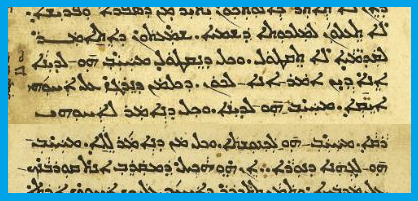
21 “You have heard that it was said before: ‘Do not kill.’ And everyone who shall kill is liable to judgment.
22 But I, I say to you, that all who are baselessly angry concerning his brother without cause are liable to judgment, and all who shall say to their brother, ‘Contemptible one!’ are liable to the assembly, and all who shall say, ‘Useless one!’ are liable to the fire of Gihana.”
22 But I, I say to you, that all who are baselessly angry concerning his brother without cause are liable to judgment, and all who shall say to their brother, ‘Contemptible one!’ are liable to the assembly, and all who shall say, ‘Useless one!’ are liable to the fire of Gihana.”

27 “You have heard that it was said: ‘Do not adulterate.’
28 Yet, I say to you that all who looks at a wife so that he should desire her immediately adulterates in his heart!”
28 Yet, I say to you that all who looks at a wife so that he should desire her immediately adulterates in his heart!”
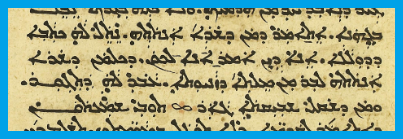
31 “It was said: ‘He who dismisses his wife shall give to her the writing of the divorce.’
32 Yet, I say to you that all who would dismiss his wife outside from the matter of fornication makes her to adulterate, and he who takes the one left adulterates.”
32 Yet, I say to you that all who would dismiss his wife outside from the matter of fornication makes her to adulterate, and he who takes the one left adulterates.”
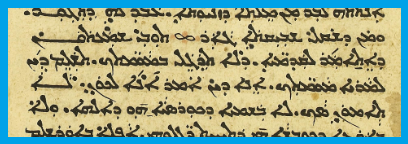
33 “Furthermore, you have heard that it was said formerly: ‘Do not be false in your swearings but complete your swearings to Marya.’
34 Yet, I say to you, that you should swear by no sum; not by the heavens, which are the throne of Alaha…”
34 Yet, I say to you, that you should swear by no sum; not by the heavens, which are the throne of Alaha…”

38 You have heard that it was said: “Eye for eye, and tooth for tooth,”
39 But I say to you, “You shall not stand to oppose evil, but instead, he who strikes you upon your right cheek, turn to him also the other.”
39 But I say to you, “You shall not stand to oppose evil, but instead, he who strikes you upon your right cheek, turn to him also the other.”

40 “And he who desires to be in judgment with you, and take your coat, allow him also your cloak.”

41 “He who forces upon you one mile, you must go with him two.”
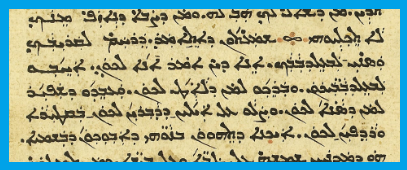
43 You have heard that it was said: “You must be compassionate to your neighbor,” and ‘hate your enemy.’
44 But I say to you, “You must love your enemies, and you must bless them who are cursing you, and you must perform beautiful things unto them that are hating you, and you must pray about those who are guiding you by force, and who are persecuting you…”
44 But I say to you, “You must love your enemies, and you must bless them who are cursing you, and you must perform beautiful things unto them that are hating you, and you must pray about those who are guiding you by force, and who are persecuting you…”
He ends these glimpses of what it means to live not only by the black fire but by the white fire of the Torah, as well, by making a statement that can be no more demanding of us as believers in Matthew 5:48.

“Therefore, you must be perfect, as Your Father in the heavens is perfect.”
Yeshua commanded of us to be perfect because He had just revealed prematurely some of the New Torah that Judaism says Messiah is expected to give to us. He showed glimpses of what it means to live the perfect Torah—the union of the two Torahs together and without lack. He could thus make that request of us to be perfect in our performance of the Torah, to stand in the fire and be fire, as the Midrash Tanchuma and Talmud, tractate Chagigah had previously asserted.
We see another instance of the Messiah calling us to be more than we are and perform the white fire of the Torah in John 13:34.
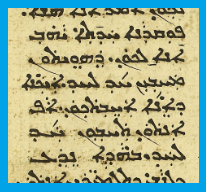
A new commandment I give to you, that you shall love one another; how that I have loved you even you shall love one another.
He dictates a new commandment, which is to love each other. This is really the original commandment found in Leviticus 19:18 to love our neighbor, but Yeshua has invoked upon it the deeper reality of what that means. He does this with the qualification of “how that I have loved you.” We are not to love just “as you love yourself,” but to look to the perfect example of love, of the Messiah who lays down His very life for us, as the standard of love we are to live. This is the white fire that surrounds the black fire of the second greatest commandment!
Put simply, Yeshua the Messiah called for us to live the two Torahs right now in this world when we understand the context of these passages! He has already initiated teaching the revealed Torah and its unrevealed deeper intents, just like Judaism has told us Messiah shall do!
With eyes of flesh we might see just one single written Torah preserved in the Hebrew text for us to perform as a religious document. But if we look closer with the eyes of faith, we are able to glimpse the second Torah that vivifies and gives even deeper meaning to the written text. In order to appreciate what He has given us, we must seek to know the Torahs in their fullest measure and expression: the black and the white fire united together.
There will come a time when the entirety of the depth of the Torah is revealed and we perform it with wisdom without lack. But the good news is that we don’t have to wait for complete understanding to come when Yeshua sits as the crowned Messiah and teaches it clearly to all peoples. We can live what we know of the two Torahs today, boldly fulfilling the black of the ink and the white of the surrounding parchment in spiritual maturity where we are able, with eyes primed to see the deeper truths that sustain and give platform for the revealed truths of His Word. This is the Torah; this is our inheritance!
There will come a time when the entirety of the depth of the Torah is revealed and we perform it with wisdom without lack. But the good news is that we don’t have to wait for complete understanding to come when Yeshua sits as the crowned Messiah and teaches it clearly to all peoples. We can live what we know of the two Torahs today, boldly fulfilling the black of the ink and the white of the surrounding parchment in spiritual maturity where we are able, with eyes primed to see the deeper truths that sustain and give platform for the revealed truths of His Word. This is the Torah; this is our inheritance!
All study contents Copyright Jeremy Chance Springfield, except for graphics and images, which are Copyright their respective creators.
